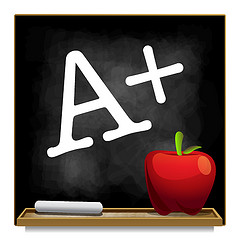
Just imagine: You pour your heart and soul into creating the perfect assignment or project that infuses inquiry and discovery while leading students to a deep understanding of the content. You excitedly share this new learning experience with your students explaining all of the important details, and as soon as you ask for questions, you get the one you dread.
“Will this be for a grade?”
Or maybe you’ll get its evil cousin. “What kind of grade will this be?” (Assuming your gradebook has categories of different weights like mine does.)
When did chasing down a specific grade become more important than learning? Why is our focus on making the grade instead of learning and improving? What does an “A” even mean?
Does making straight “A”s mean a student is learning? Could it really just mean they already knew the material? Or perhaps they are just really good at regurgitating material. What does a “B” mean? or a “C”? Ask anyone who has been to school (which will probably be almost anyone you ask), and they are sure to have some opinion on grades and the importance of As, Bs, or Cs. They know what it means to get a D or to fail. But do they really know? Is a student who is failing not learning? Could they be learning but struggling with the material? Is an A student automatically learning? Could they already know the material?
We use the traditional A, B, C, D, F (or U) grading system because we are used to it. It makes assessing assignments easy for teachers. When we have classes of 32 or more a relatively easy grading system is required. But if we don’t know what are students know, and our students don’t really know what they know, what good is the system? Does it take time to assess students using other methods? Absolutely. Is there one perfect way to assess students? Maybe, but I haven’t found it yet. Does our grading system need an overhaul? In my opinion, absolutely yes. But perhaps this is just one tiny electron in a universe of education molecules that need changing. For instance, a system that allows for continuous student growth requires a lot of time on behalf of the teacher and the student. With large class sizes, there wouldn’t be enough time in the day to fairly evaluate each student. So is the problem the grading system or the class size? There are many things in education that need fixing, changing, reinventing.
So what do we do? We take baby steps. We make the changes in the classroom that work for us. (For instance, last year I used standards based grading very effectively. With a new school this year, it just wasn’t to be.) Eventually, the world of education will become the wondrous thing of learning we envision for all of our students. And one day, our students will be telling stories to their own children about when they were graded in school with As, Bs, and Cs. Can you even imagine?